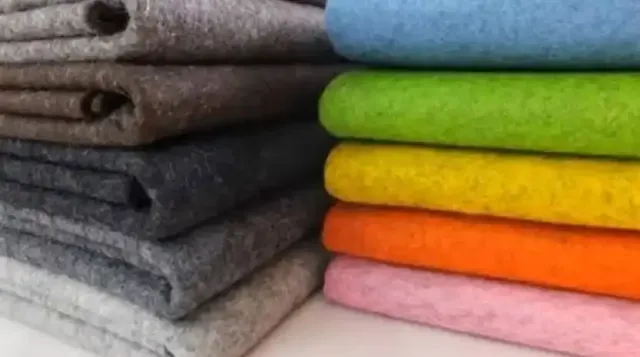Introduction
Regarding clothing, the fabric choice is crucial in determining its quality and overall appeal. The selection of high-quality materials enhances the comfort and durability of garments and contributes to their aesthetic value. In today's fashion industry, numerous fabrics vie for the title of the best quality materials for clothes. While personal preferences may vary based on individual needs and style choices, several standout contenders have emerged as favored options.
Best quality fabrics for clothes
Choosing the best quality fabric for clothes involves carefully evaluating comfort level, durability requirements, and sustainability concerns—all while aligning with personal style choices. Whether cotton's breathability or silk's luxurious feel, wool's insulation or linen's eco-friendliness, polyester's resilience, or nylon's elasticity—each fabric brings distinct advantages to cater to diverse fashion needs. Understanding these qualities inherent in different textiles available today can help individuals curate a wardrobe built on enduring quality and style excellence.
Cotton
One such fabric is cotton, which has long been hailed as a staple in clothing manufacturing. Renowned for its breathability and softness, cotton offers excellent comfort throughout different seasons. It allows air circulation while absorbing moisture from the body, making it ideal for everyday wear or those with sensitive skin. Additionally, cotton is highly durable and easy to care for, often retaining its shape after repeated washing.
Silk
Another notable contender is silk—a luxurious fabric renowned for its elegance and timeless appeal. Silk boasts a smooth texture due to its natural protein fibers derived from silkworms' cocoons. This inherent luster gives garments made from silk a stunning visual sheen unmatched by other materials. Furthermore, silk possesses exceptional temperature-regulating properties; it keeps individuals cool during warmer months while providing warmth in colder weather.
Wool
Wool is another top-quality fabric widely recognized for its insulating properties and longevity. Derived mainly from sheep's fleece or goat hair (such as cashmere or mohair), wool provides unparalleled warmth during chilly seasons by effectively trapping heat close to the body while allowing breathability at the same time. Moreover, wool is highly resistant to wrinkles and possesses excellent elasticity, ensuring durability over extended periods.
Linen
For eco-friendly alternatives without compromising quality or aesthetics, linen is a strong contender among natural fibers used in garment production. Made from flax plant fibers, linen exhibits remarkable strength despite its lightweight nature—contributing to longevity and wearer comfort. Linen fabrics also possess excellent moisture-wicking properties, keeping individuals cool and dry in warm climates.
Polyester and nylon
Lastly, we must recognize the rise of synthetic fabrics like polyester and nylon. While not natural fibers per se, technological advancements have transformed these materials into highly desirable options due to their durability and versatility. Polyester is known for its strength, wrinkle resistance, and color retention capabilities, making it suitable for various clothing styles. On the other hand, nylon offers exceptional elasticity combined with lightweight attributes—an ideal choice for activewear or garments requiring stretchability.
Top 10 textile countries in the world
The global textile industry plays a crucial role in the economies of numerous countries worldwide. Textiles contribute significantly to employment and foreign exchange earnings from manufacturing to exporting. In light of its importance, it is essential to identify and analyze the top ten textile-producing countries worldwide.
1. China
China undoubtedly claims the top spot as one of the largest textile producers globally. Its vast manufacturing capabilities, cost-effective labor force, and extensive supply chains have made it a dominant player in the industry.
2. India
India is another prominent country in textile production due to its rich tradition and expertise in textiles. The Indian textile sector encompasses diverse products such as cotton, silk, jute, wool, and synthetic fibers.
3. United States
Despite stiff competition from low-cost manufacturers abroad, the United States maintains a strong presence in the global textile market with advanced technology-driven production processes and high-quality standards.
4. Germany
Known for its focus on innovative technologies and precision engineering across industries, Germany has built a solid reputation for producing high-end technical textiles in sectors like automotive engineering and healthcare.
5. Japan
Japan's keen attention to detail has propelled its position within niche segments of luxury textiles like silk fabrics renowned for their exceptional craftsmanship and quality.
6. Bangladesh
Bangladesh has emerged as a significant player in mass-scale garment manufacturing due to its abundant labour force and competitive pricing strategies, which attract many international clothing brands seeking affordable production options.
7. Turkey
Turkey boasts a long history rooted deeply within textiles alongside skilled artisans who continue traditional practices while embracing modern techniques across various product lines, including rugs, towels, and bedding materials.
8. Italy
Italy represents excellence in fashion-oriented textiles such as luxury fabrics or designer clothing items crafted meticulously, emphasizing style over volume production capacity alone.
9. Brazil
Brazil showcases immense potential through natural fiber-based products sourced from resources like cotton or sisal which serve as the foundation for their vibrant textile industry catering to both domestic and international markets.
10. Pakistan
Rounding up the top ten is Pakistan, known for its expertise in cotton production and spinning mills. The country's textile sector has made significant strides by integrating modern technologies into manufacturing processes, enhancing productivity and quality standards.
Conclusion
It is worth noting that the best quality fabric for clothes ultimately depends on one's specific requirements and preferences. Factors such as climate, intended use of the garment, desired aesthetic appeal, and personal comfort come into play when determining which fabric best suits individual needs. By considering these factors alongside the unique characteristics offered by different fabrics—natural or synthetic—one can make informed decisions while selecting high-quality materials to create fashionable garments with longevity in mind.
These ten countries represent a diverse range of approaches to textile production, each with unique strengths contributing to their standing in the global market. While some excel in mass-scale manufacturing, others focus on luxury or technical textiles. It is crucial to recognize these distinctions to understand how each country plays a vital role in shaping the worldwide textile industry landscape.














0 Comments